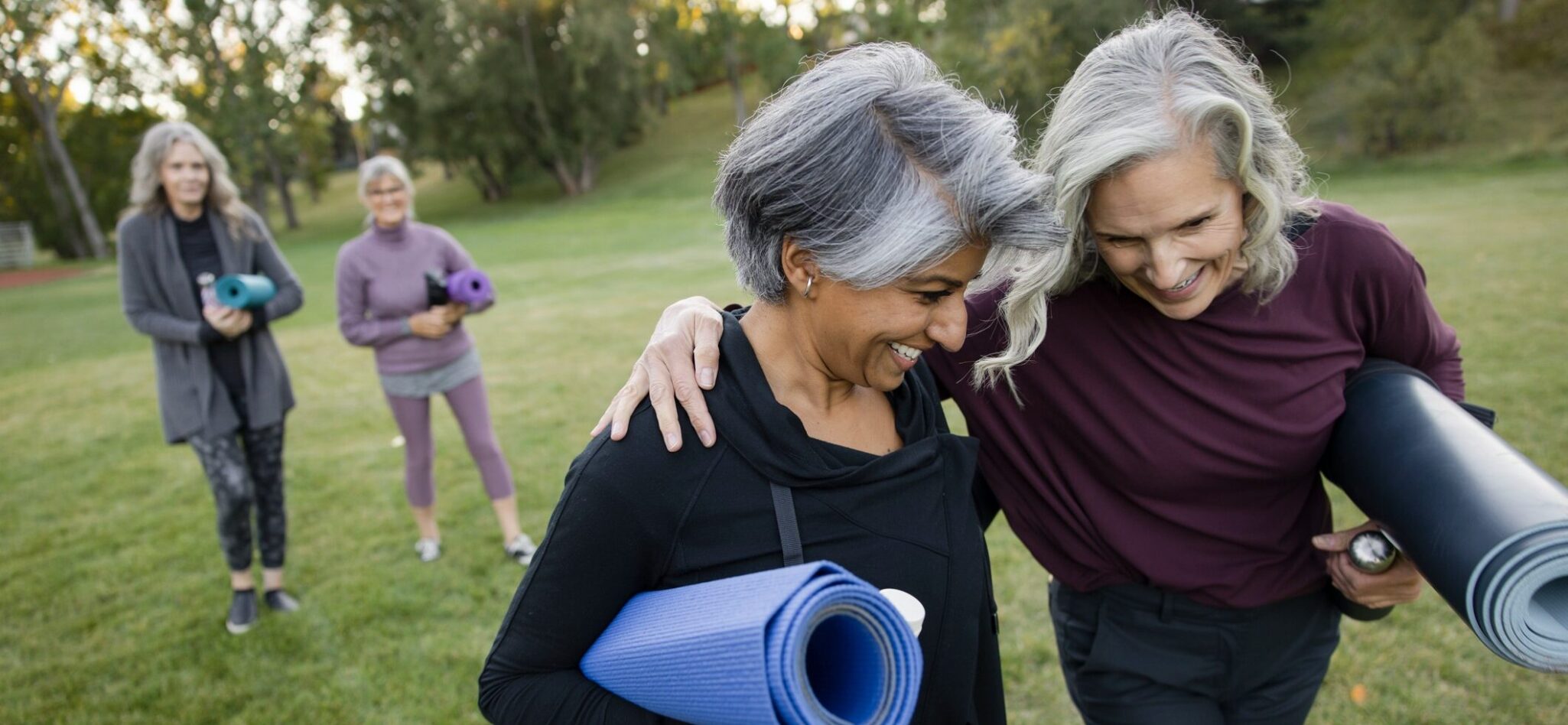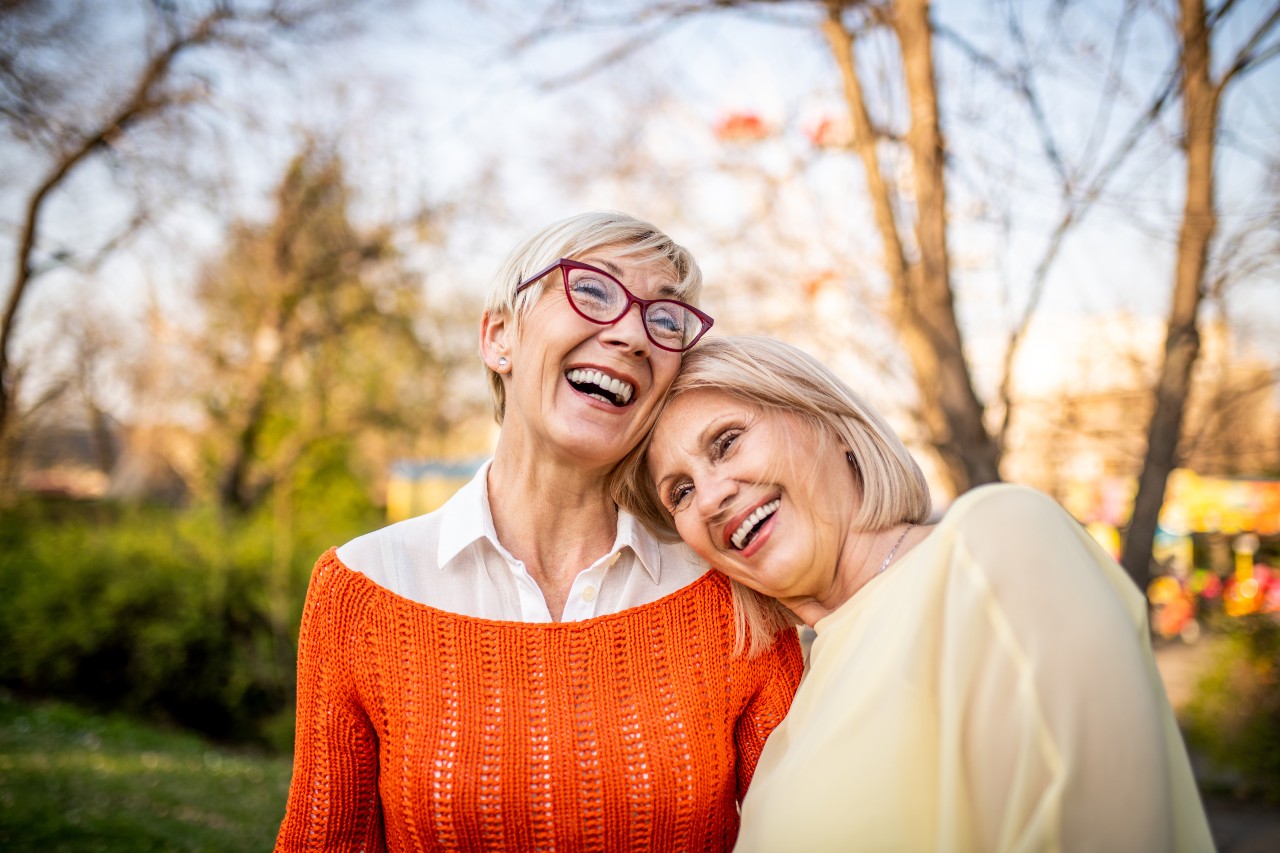The Importance of Staying Physically & Mentally Active in Retirement

More and more studies are uncovering ways older adults can enjoy a happier and healthier life through exercise and social connection. This blog post will discuss the ways active seniors can help ensure their future is more engaging and enjoyable.
Why is it Important for Older Adults to be Active?
Staying active after retirement provides a variety of health benefits from preventing physical injuries to improving mental health. Here are some key advantages of active living for older adults:
- Improved overall health: Active seniors who regularly exercise have reduced risks of chronic illnesses and diseases along with improved immune and digestive systems.
- Helps manage body weight: Everyone’s metabolism naturally slows with age, and getting to and maintaining a healthy weight requires both regular physical activity and healthy eating. To maintain your weight, do moderate physical activity — like walking, dancing or yard work — for 150 minutes a week. If you want to lose weight and keep it off, you’ll need to raise your physical activity level and reduce the number of calories you’re eating and drinking.
- Increases bone health and strength: Regular physical activity helps build and maintain bone strength. When you exercise, your bone adapts by building more cells and becomes denser. Lifting weights can also help you increase or maintain your muscle mass and strength. Slowly increasing the amount of weight and number of repetitions you do as part of your muscle strengthening activities will give you even more benefits.
- Better heart and cardiovascular health: You can help reduce your risk of heart disease and enhance your cardiovascular health with frequent physical activity. It can also help lower your blood pressure and improve your cholesterol levels.
- Improves mental health: Exercising frequently leads to a variety of mental health benefits including helping fight depression and reducing stress.
- Promotes better sleep: Adding regular aerobic exercise to your day promotes deeper sleep by raising your core body temperature and encouraging rest when you start to cool down. Sleep is essential in supporting your brain, hormones, lungs, blood pressure, cardiovascular system, immunity and appetite.
- Reduce hypertension: Just adding 30-minutes or more of moderate aerobic exercise, five times a week will help lower your blood pressure, decreasing the risk of some cardiovascular problems.
- Increased social opportunities: Being active not only gets you out and about but it gives you more chances to socialize and make new friends. To get started, consider joining a walking group, participating in an aerobics class or taking a swimming class. Having an active social life has also been shown to help active seniors stay mentally sharp
- Brain boost: Exercise is linked to improved cognitive function and better motor skills. It’s also associated with lowering the risk of vascular dementia in seniors.
- Reduced risk for some cancers: Being physically active lowers your risk for developing several common cancers, including bladder, breast, colon, endometrium, esophagus, kidney, lung and stomach.
Creating an Active Lifestyle
We’ve covered the importance of staying active for seniors, but if it’s been years since you took a fitness class, where should you begin? Before starting any activity program, it’s important to talk with your doctor to discuss your options. In general, it’s recommended you do a minimum of 30 minutes of moderate-intensity physical activity on most, if not all, days. After you start a fitness routine, it’s important to let your doctor know if you experience any of the following:
- Dizziness or shortness of breath
- Chest pain or pressure
- Blood clots
- Infection
- Sores that won’t heal
- Joint swelling
Exercise categories and programs to consider:
Aerobic exercises: 30-minutes of aerobic/cardiorespiratory exercise each day — such as brisk walking, jogging, swimming, and cycling — can help increase your heart rate and breathing.
Strength and resistance exercises: Strength training routines should be done 2-3 times per week, with exercises focused on all major muscle groups (arms, legs, core). If weights are too heavy, resistance bands or bodyweight exercises — like wall sits, sit-ups and push-ups — are excellent alternatives.
Stretching and flexibility routines: Stretching warms up and cools down your muscles before and after you exercise and also improves flexibility, which reduces the likelihood of injuries and improves your range of motion. Gentle stretching classes like yoga, Pilates and tai chi can increase your overall flexibility while being easy on your joints.
Discover a True Community of Active Seniors
It can be difficult to start (and stick to) a fitness program on your own. That’s why many older adults choose an active senior living community like Freedom Village. They find a welcoming community of like-minded neighbors who are interested in living life to the fullest. Plus, as a Life Plan Community, our independent living lifestyle is backed with a full continuum of on-site care, if it’s ever needed. To learn more about our community, contact us here.



